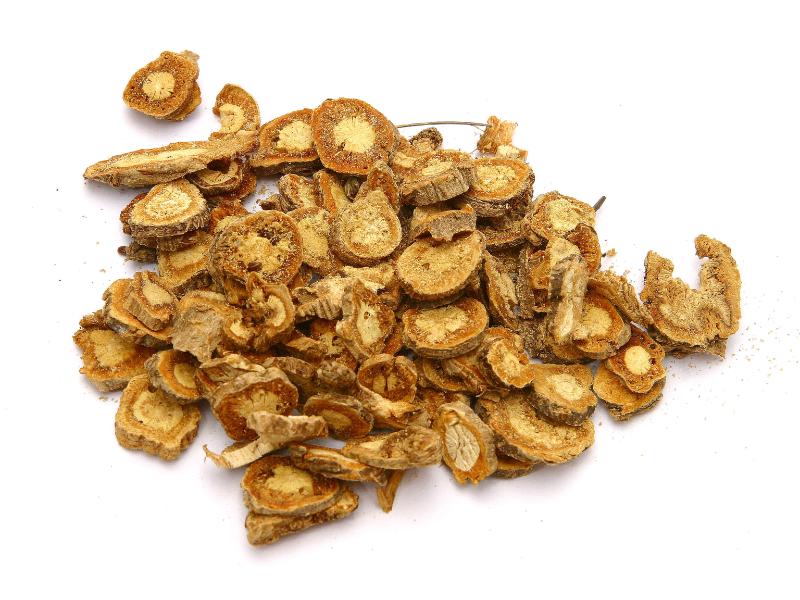Search in medicinals
Saposhnikoviae Radix
Saposhnikovia
防风 〔防風〕 fáng fēng

Alternate English names: siler [root]
Kingdom: Plant
Origin in PRC Pharmacopoeia: Saposhnikovia divaricata (Turcz) Schischk. (PRC Pharmacopoeia)
Origin in unofficial sources: Ledebouriella seseloides Wolff. [= Saposhnikovia divaricata (Turcz.) Schischk.; Siler divaricatum Benth. et Hook.]; Ligusticum brachylobum Franch.; Seseli mairei Wolff; Seseli yunnanense Franch.; Seseli iliense (Reg. et Schmalh.) Lipsky; Saposhnikovia divaricata (Turcz.) Schischk.*
Use: Medicinal
Category: Exterior-resolving agents / Warm acrid exterior-resolving agents
Properties: Acrid, sweet; slightly warm.
Channel entry: Bladder, liver, and spleen channels.
Actions and indications:
- Dispels wind and resolves the exterior: External contraction of wind-cold manifesting in headache, generalized pain, and aversion to cold.
- Overcomes dampness and relieves pain: Wind-cold-damp impediment (fēng hán shī bì), with hypertonicity of the limbs.
- Resolves tetany: Lockjaw, with arched-back rigidity (opisthotonos), clenched jaw, and convulsions.
- Additional uses: Fáng fēng is used for patterns of liver qì exploiting the spleen or liver-stomach disharmony, manifesting in diarrhea with abdominal pain that is relieved by defecation. When it is stir-fried, it checks diarrhea. In this application, fáng fēng is combined with Chén pí (陈皮 Citri Reticulatae Pericarpium, tangerine peel), Bái sháo (白芍 Paeoniae Radix Alba, white peony [root]), and Bái zhú (白朮 Atractylodis Macrocephalae Rhizoma, white atractylodes [root]), as in the formula
tongxieyaofang .
Dosage and method: Oral: 3–10g. Used in decoctions, medicinal wines, pills, and powders. For bleeding, it may be charred before use.
Warnings: Use with care in tetany due to blood vacuity, and in yīn vacuity with effulgent fire.
Product description: This product is a cylindrical root about 20 cm long and 1 cm thick, with dense annular nodes bearing scaly hairs.
Quality: The best roots have a yellow core on the cross section. The decocting pieces are longitudinal or transverse slices.
Production area: Grows wild in Hēilóngjiāng, Jílín, Inner Mongolia, Shānxī, Héběi, Shāndōng.
Etymology: The name fáng fēng 防风, literally defense against wind,
reflects the use of this agent in dispelling wind.